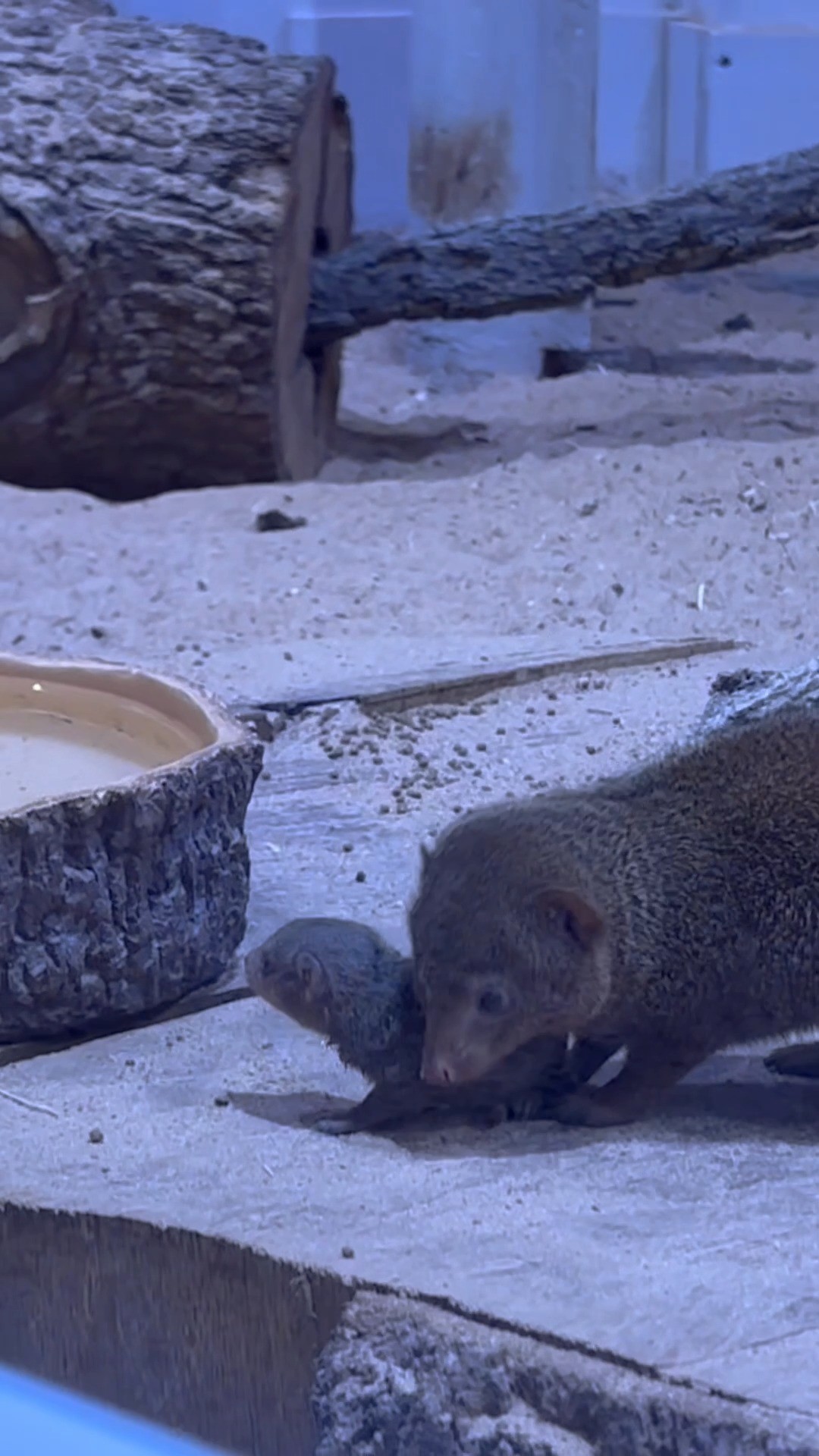- Introduction to the new dwarf mongoose pup and its significance at the Zoo
- Insights into dwarf mongoose behavior and social structures
- The role and importance of zoos in conservation and education
- Challenges and responsibilities in zoo management and animal care
- The broader impact of zoo births on wildlife conservation efforts
The recent birth of a dwarf mongoose pup at the Zoo marks a significant milestone. As the first pup born there, it represents a successful initiative in enhancing the genetic diversity of captive populations. This achievement follows the introduction of two female mongooses to an existing group of males, highlighting an important moment not only for the Zoo but for wildlife conservation at large. Monitoring the pup and its mother ensures they thrive in their environment. Visitors are encouraged to observe these fascinating creatures and witness firsthand the dynamics of their group interactions inside Love’s Pachyderm.
Dwarf mongooses are intriguing animals, small in stature yet robust in behavior. They operate within socially complex structures, typically composed of extended family units. These groups are cooperative, often composed of a dominant pair that leads the group while the others assist in caring for offspring and defending territory. Understanding these dynamics is crucial for ensuring the well-being of mongooses in zoological settings. Through cooperative living, mongooses can demonstrate social behaviors and affiliations that are rare and special to study in captive and wild populations alike. Their playful yet vigilant nature offers visitors a glimpse into the sophisticated social lives of these small carnivores.
Zoos play a pivotal role in wildlife conservation, serving as critical centers for education and preserving species from extinction. By maintaining and breeding species like the dwarf mongoose, zoos contribute to conserving genetic diversity. These institutions help educate the public about the importance of biodiversity and the need to protect natural ecosystems. They provide a setting in which researchers can study animal behavior, genetics, and health, contributing valuable data that can inform broader conservation strategies.
Managing a zoo presents a myriad of challenges, particularly concerning animal care and welfare. Zoo staff must ensure that animals are not only physically healthy but also mentally stimulated and comfortable. This requires a thorough understanding of each species’ needs, which can often be quite specialized. From dietary requirements to social interaction and environmental enrichment, zoo personnel need to offer comprehensive care. Training programs and continual education for staff are vital to keeping up with the latest practices in animal welfare and conservation strategies. Meeting these responsibilities is crucial for the well-being of animals in care and reinforcing public trust in the role of zoos.
The birth of new animals in zoos often resonates within larger wildlife conservation efforts globally. It highlights the potential for captive breeding programs to bolster populations of endangered species. These efforts can sometimes lead to successful reintroductions into the wild, directly supporting conservation goals. Public interest in new zoo arrivals often drives increased visitation and engagement, furthering educational outcomes and conservation funding. The example of the Zoo’s new dwarf mongoose pup illustrates how small successes in captive breeding can amplify conservation messages worldwide, encouraging people to support and invest in preserving biodiversity.
Through a lens of education, conservation, and engagement, the recent addition of a dwarf mongoose pup at the Zoo underscores the multifaceted role zoos play in our society today. These institutions go beyond entertainment, serving as custodians of rare and precious wildlife, integral to educational initiatives and conservation efforts. The story of this tiny mongoose is an invitation to observe and learn from nature at its most intimate and collaborative, an opportunity the Zoo offers to all its guests.
*****
Source Description
There are even MORE new residents on the block including a brand-new dwarf mongoose pup!
Say hello to the first ever dwarf mongoose pup ever born at the Zoo! After recently welcoming two females to our group of male mongooses, we are thrilled to welcome the first little one of this group. While we do not yet know if the pup is a male or female, our caretakers have been keeping an eye on mom and baby making sure both are healthy. Head to the Zoo and see if you can spot this little one with their family inside Love’s Pachyderm 💚
📷: Caretaker Carsyn


